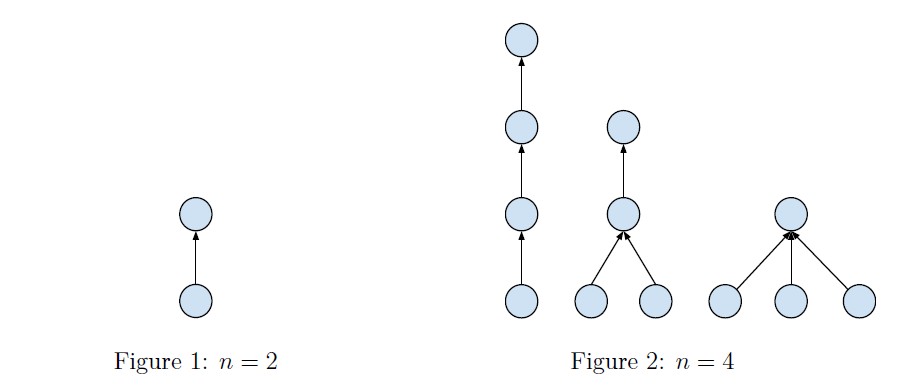题目链接:http://acm.hdu.edu.cn/showproblem.php?pid=4472

1 2 3 40 50 600 700
Case 1: 1 Case 2: 1 Case 3: 2 Case 4: 924 Case 5: 1998 Case 6: 315478277 Case 7: 825219749
题意:
有n个点,使之构成一个树,要求每一层的每个节点的子节点数要相同。问有多少中构造法!
PS:
对于n个点,先将第一个节点(父节点)去掉,因为父节点只有一个,还剩下 n-1 个点,
因为每一层的每个节点的子节点数要相同,所以将这 n-1 个节点m等分,每份为(n-1)/m个点,
再递归求解即可;
代码如下:
#include <cstdio>
#include <cstring>
#define mod 1000000007
int dp[1017];
void init()
{
dp[1] = 1;
dp[2] = 1;
dp[3] = 2;
for(int i = 4; i <= 1000; i++)
{
for(int j = 1; j < i; j++)
{
if((i-1)%j == 0)
{
dp[i]+=dp[(i-1)/j];
dp[i] %= mod;
}
}
}
}
int main()
{
int n;
int cas = 0;
init();
while(~scanf("%d",&n))
{
printf("Case %d: %d\n",++cas,dp[n]);
}
return 0;
}
原文地址:http://blog.csdn.net/u012860063/article/details/40404511